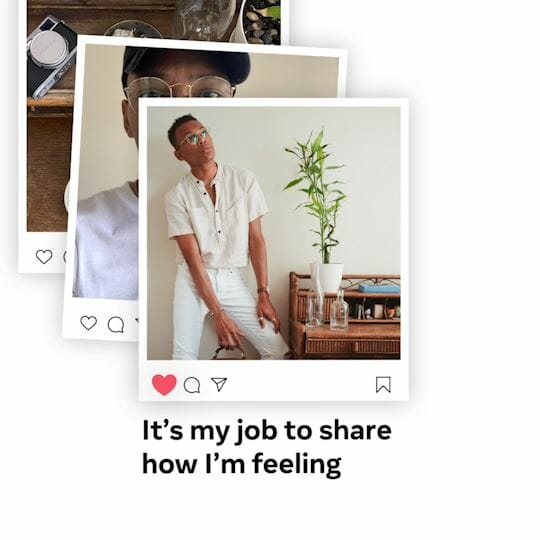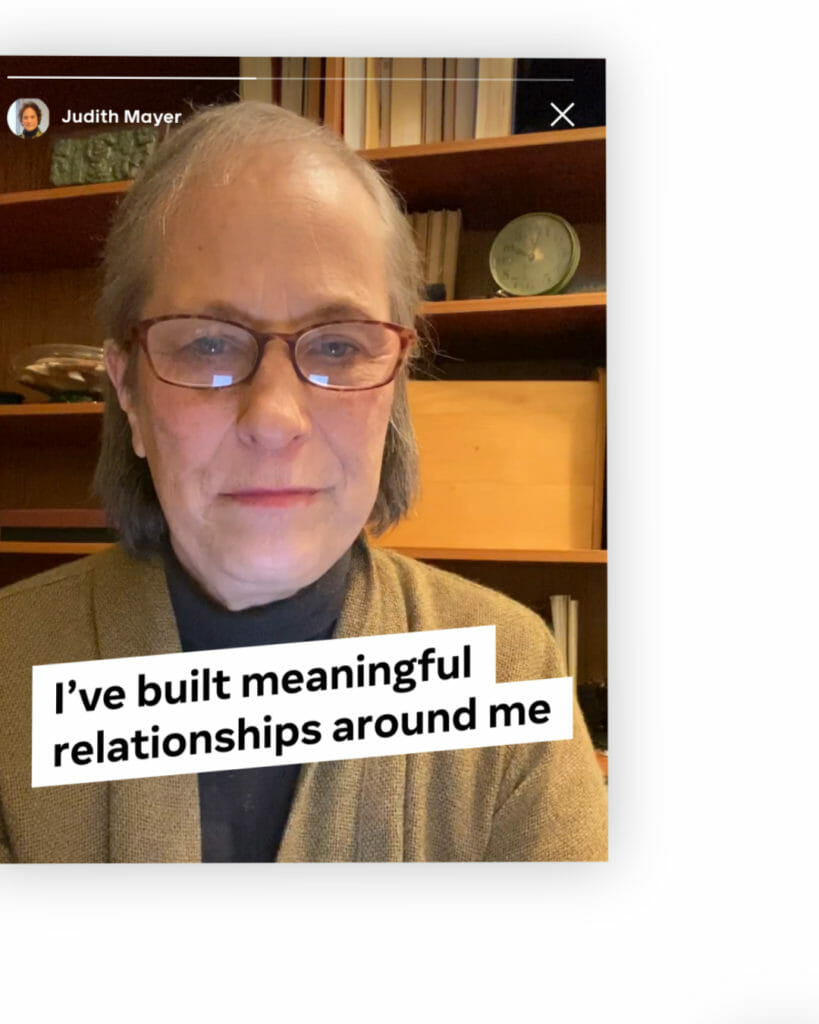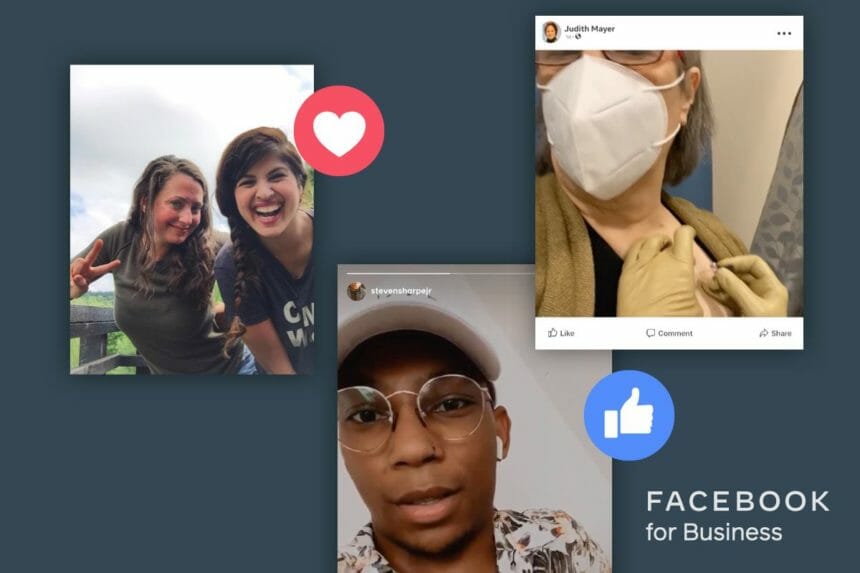There are often a lot of questions about how creativity, storytelling and patient connections come to life on Facebook and Instagram. We sat down with Neisha Tweed Bell, health creative lead at Facebook to learn more about its recently launched campaign highlighting how people use their platforms to tell stories about their health journeys and how brands should be thinking about creating mobile-first storytelling.
QUESTION: What are some of the trends you noticed about how people use the platform, from your past 5 years at FB? How have things evolved/changed over time? What has inspired you about how people use the platform when it comes to health and personal storytelling?
ANSWER: The way the people come to Facebook and Instagram to not only share their stories but also to find and build community has been one of the most inspiring things to see. It’s easy to think about it as passive engagement and consuming content, but the majority of people aren’t just scrolling and tapping, they’re sharing personal stories and experiences that others can learn from, and building relationships and networks that offer support.
I especially see this with health where people are using their profiles and pages to tell personal stories and invite others into their health journey in authentic, informational or even funny ways. That’s probably my favorite part specifically – how people use Live, Video, text-based carousels, memes, Q&A in stories, and more, and how folks are just eating it up. We can learn so much about how to connect with our audiences by just watching what they’re doing.

QUESTION: The campaign features the stories of three patients, how did you find people to participate?
ANSWER: There are so many people who are using our tools to inspire and connect with others on their health journey. The hard part was narrowing that down to just a few people. We, of course, accounted for diversity and inclusion in our search, making sure we got a range of backgrounds, cultures, orientation, and ages, but we also wanted to feature the stories of people with a range of conditions who also had different ways of bringing it to their communities. Depression is just a part of Stephen’s story but not the main feature of his content. Nitika has her personal profile as well as @Chroniconofficial, a dedicated space where she brings people together specifically around having a chronic illness. Judith is a group admin for a breast cancer community and her role in that space is purely to support and connect people around that topic.
We created a profile of the types of people we were looking for – beyond demographics and follower count, we were looking into the way they tell stories, their ability to create content and the way they engaged with their audience. We wanted to make sure they could make great videos, speak authentically to their health experiences and that they actually connected with their communities on our platforms, versus just blasting out content. We worked with Collectively, a Facebook Marketing Partner, that manages creators and influencers.

Once we picked our partners, we did a pre-brief interview with each of them to discuss the project and get their inputs. It is important they feel like part of the process and that we’re all on the same page about what we want to accomplish together. Plus this was a great opportunity to build rapport and get to know their personal stories.
We used this info to build the brief and had another meeting to go through the particulars of the brand, project and production – key talking points, dos and don’ts, legal requirements, shooting tips and suggestions and all that fun stuff.
Since the creators were going to go off and shoot then bring us back options, we wanted to make sure we were clear on our expectations and they were clear on their vision and that everybody was aligned to the tangible things we needed to keep in mind – from what to keep in mind regarding wardrobe to where to shoot to get the best light.
QUESTION: You mentioned earlier how inspired you are by how the platform consumption is changing. Did that play a role in the development process?
ANSWER: 100%. It’s important to build content and campaigns based on how people are consuming content. Mobile is a whole different landscape when it comes to engagement, attention and retention, so you have to keep that in mind from concept, all the way down to production, execution and distribution.
- Authentic Presence – we talk about this a lot to marketers because this is the key to truly connecting in the intimate but busy mobile space. We’ve done studies that have shown that having an emotional hook helps – whether it’s heartfelt, moving or funny, people want to feel something when they watch a piece of content. Additionally, we’ve seen that having people in the actual creative can help, and encourage advertisers to explore creative ways to frame faces, create a more 1:1 connection, make eye contact or even break the fourth wall to draw people into the story. Learn more about the study and see some of our Creative Considerations for Designing Health Ads for Mobile.
- Mobile Production – Storyboarding and shooting with mobile and social in mind yield the best results because you’re thinking about framing, new narrative story arcs and platform-specific nuances (and opportunities to innovate) ahead of time. (Scroll down to the Creative Considerations section of the Facebook for Business Inspiration page)
For this campaign, we shot everything vertically on mobile phones, which definitely helped make it truly “Mobile First” and actually a bit easier since we were all remote and could quickly share content and give feedback as things were being recorded.
- Mixed Asset Campaigns – People move fluidly in and out of Facebook and Instagram and sometimes want something quick and immediate, and other times will respond to something longer and more immersive. We’ve found that creating campaigns with content that accounts for all these consumption types can lead to more success at the end of the day. So think beyond just feed video and expand to Stories, Carousels, Collections, Interactive ads, Instant Experiences and more.
QUESTION: What lessons can brand marketers learn from this work?
ANSWER: We really hope this work and the How To video at the Facebook for business site help inspire marketers to think about patient testimonials and creativity on both mobile and social media in a new way. We want to work with you to reimagine what this whole genre of content looks like for the health industry and believe that starting with how people are using the platforms and delivering campaigns that are made with them in mind will totally change the game.
My one last note is to be agile, especially when it comes to mobile production. You can do so much more with much less when shooting for mobile, and a strong concept and well-crafted visuals can elevate any story. So when you’re producing for mobile, whether it’s taping off your cameras or shooting with mobile phones, how can you be more purposeful with what and how you shoot? Also, you have to think about the way you tell stories differently. For example, the traditional linear TV story arc and horizontal 16 x 9 framing won’t really work here, so how can you explore different narrative arcs, aspect ratios and framing to make your content more dynamic and compelling?
Good luck and happy creating!








